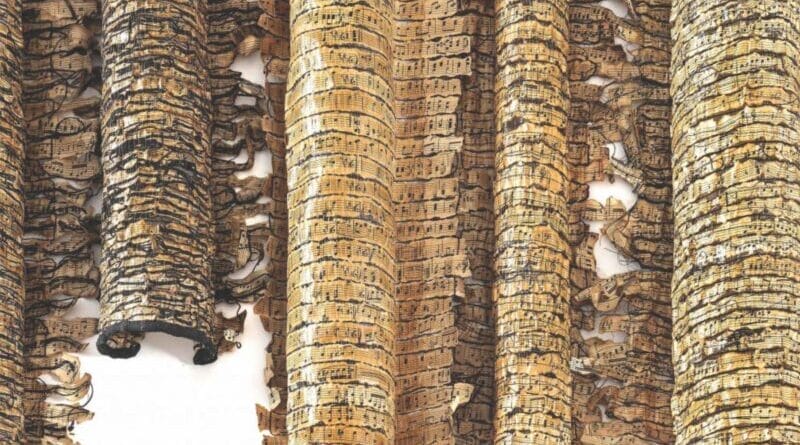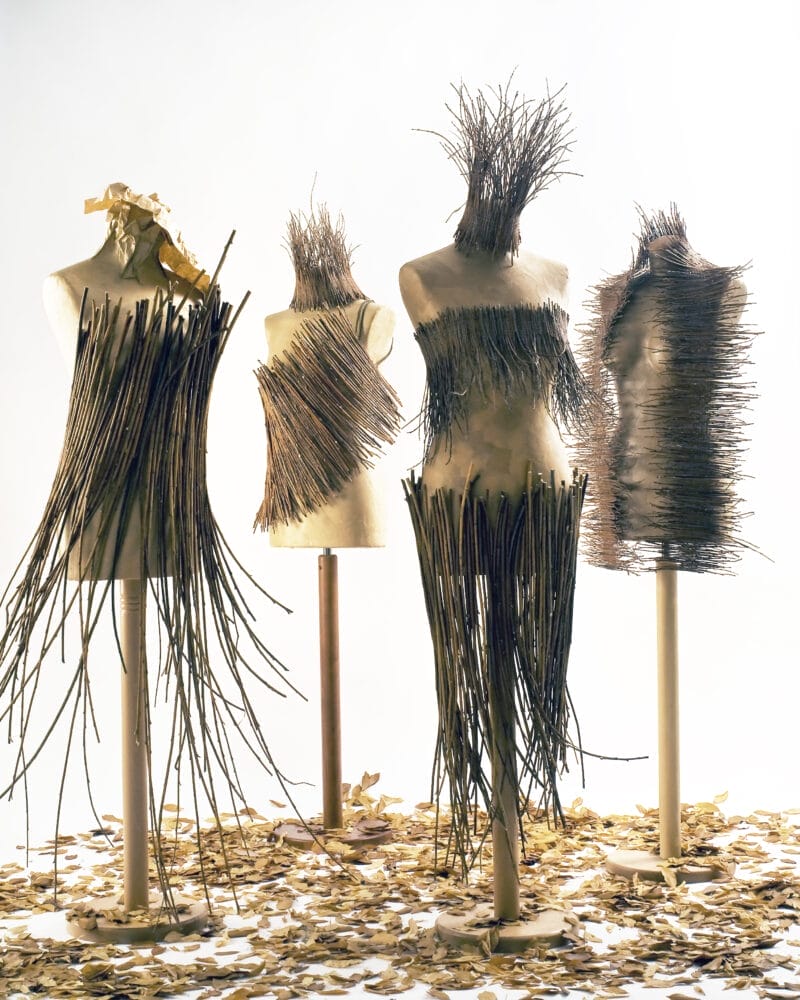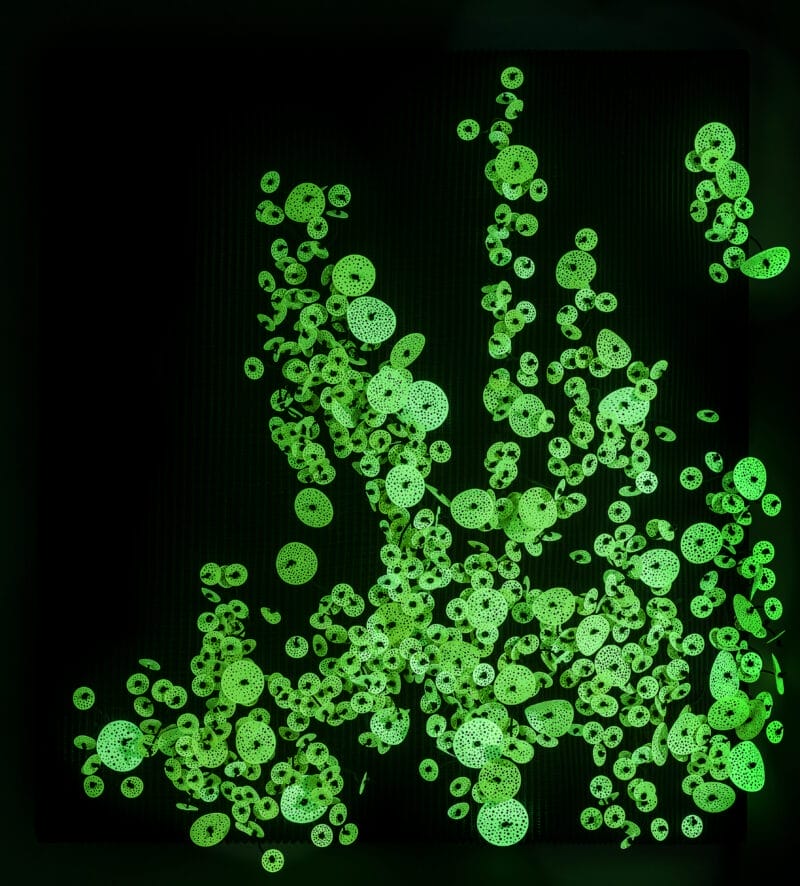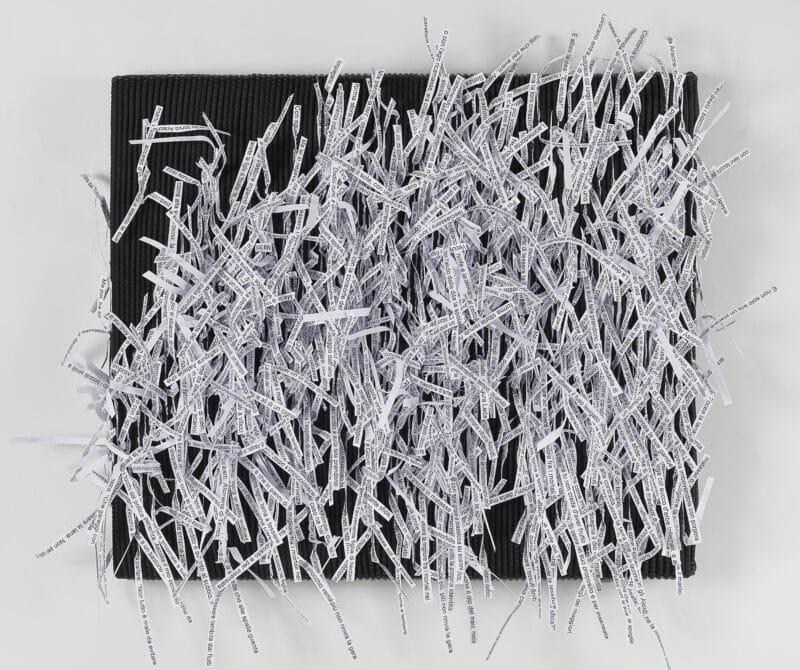SILVIA BECCARIA
This column will present twice a month a historical figure of Italian Fiber Art, present in the book Fiber Art Italiana. I Pionieri.
You can buy it HERE
Silvia Beccaria (Turin 1965), after graduating in Philosophy became interested in weaving, obtained a “Master’s degree in Art Therapy,” participated in the Textile Research Group Filo e Forma, founded by Martha Nieuwenhuijs, and for many years ran textile workshops following Art Therapy projects and collaborated with the Museum of Contemporary Art of the Rivoli Castle, for activities related to textile art.
From her earliest works Beccaria alternates between traditional loom weaving, the inclusion of heterogeneous materials and various weaves that create three-dimensional projections, with which he creates wearable sculptures or environmental installations. The materials used are diverse, natural or synthetic, functional to the theme she performs. They can be traditional yarns-such as cotton, linen, hemp, but also broom and nettle-or materials that do not contemplate spinning, such as dried flowers, ears of corn, willow branches, neoprene or PVC tubing, foam rubber, latex, polyurethane, strips of printed paper, metal wire, and film. Sometimes he inserts transparent tubes into the nylon warp that he fills with vegetable seeds of different origin, size, and coloring, as in Semi d’arte (2014).
A material experimentation that continues throughout her artistic production. Since 2005 he has been making a series of scenic and sculptural ruffs, including Giada (2009), Futura (2009), Splendor (2011) and Mal d’Africa (2012), which she offers as real jewels and unique pieces.
She composes the series of sculptures modeled on the female body, whose silhouette is transformed into post-industrial fetishes, as in: Scudo (2005), Film à porter (2008) and Cuore di tenebra (2009), sculptures that take on the appearance of vegetating totems: as in Metamorphosis, an installation consisting of four sculptures made of willow branches (2009) or in Donne in fiore con fiori secchi (2010).
She creates compact and precise tapestries that come alive with the insertion of synthetic inflorescences, obtained by working elastic white or colored plastic nets, arranged in compositions with a geometric rhythm, as in the series entitled Anemone (2009). Between 2014 and 2015 the use of fluorescent PVC allows her to create works with a double reading, in relation now to white light, now to Wood’s light (or black lamp), as in Pianeti del mare, Anellide Marina, Chirping in the snow, Erbaluna and Posidonia.
She then creates a series of works in which she weaves strips of paper, cut out from maps, musical scores, personal diaries and more, in which the text becomes woven, as in La sfida ordita (2015) composed of intertwined letters and syllables.In Il suono del silenzio (2022) she breaks down and recomposes in the form of organ pipes, old musical scores erased to create disharmonies and disagreements
An artistic quest that is rigorous in its layout and proportions, exact in its execution and ironic in its interpretation of themes.




